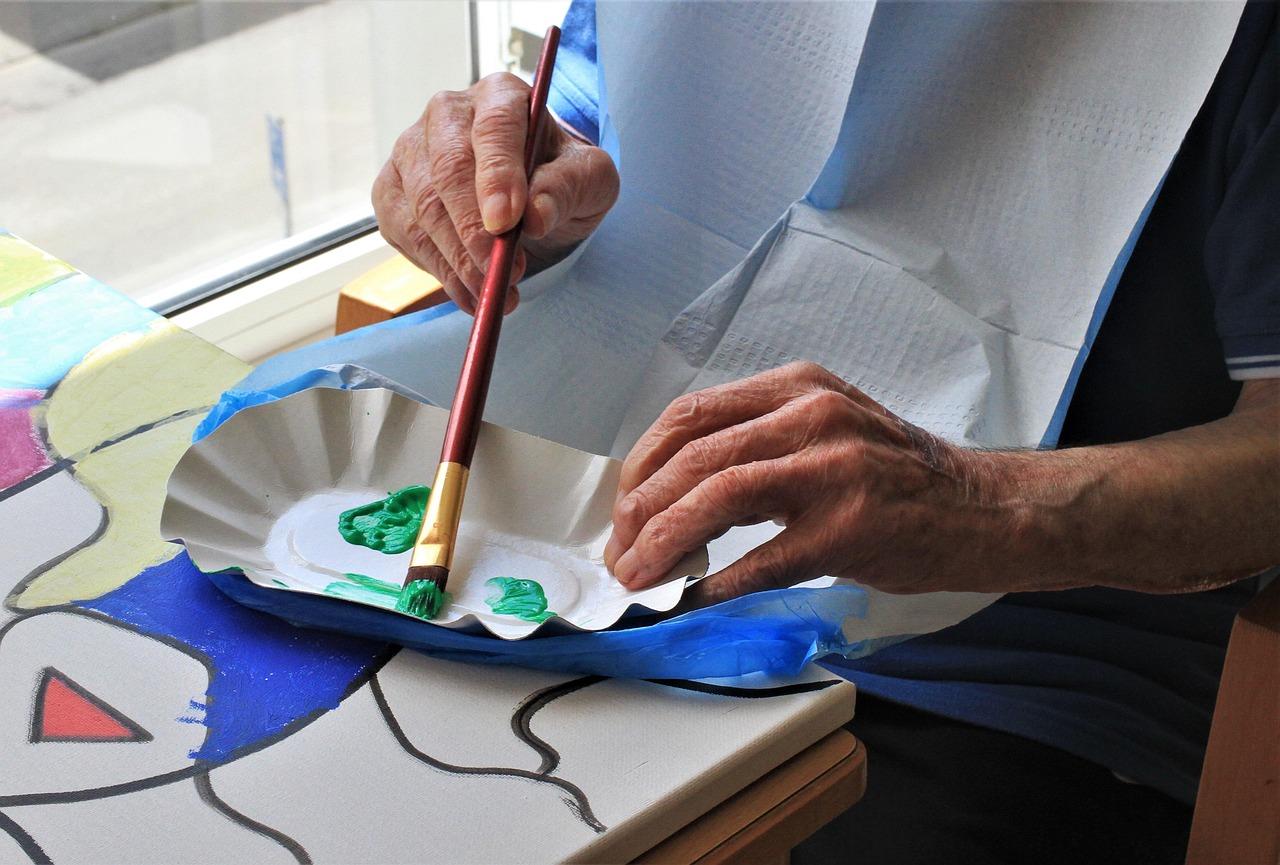In a world where words can sometimes feel like elusive butterflies, fluttering just out of reach, the challenge of communicating with individuals living with dementia becomes a poignant journey into understanding, patience, adn compassion. As care workers, you stand at the forefront of this delicate interaction, tasked not only with the physical well-being of those in your care but also with the profound responsibility of connecting with them on a human level. This guide seeks to illuminate the pathways of communication, offering practical strategies and heartfelt insights that can transform your interactions. Whether it’s through spoken language, gestures, or even silence, mastering the art of connection with dementia patients is not just a skill; it’s a vital lifeline that nurtures dignity, respect, and understanding in an often isolated world. Join us as we explore the nuanced landscape of communication, empowering you to foster meaningful relationships and enhance the quality of life for those you serve.
Understanding the Unique Communication Challenges of Dementia
Communication with individuals facing dementia can often feel like navigating a minefield of emotions and misunderstandings. As cognitive abilities decline, patients may struggle with language, memory, and the comprehension of social cues.Care workers must be equipped to recognize signs of frustration or confusion, which can manifest in various ways, from withdrawal to agitation. This understanding requires patience and a tailored approach that acknowledges the unique challenges presented by each individual’s condition. By focusing on non-verbal cues, such as facial expressions and body language, caregivers can foster a clearer connection, bridging the gap that language may sometimes create.
One effective strategy is to promote a calm and supportive environment. Here are some tips to enhance communication:
- Speak slowly and clearly: Give the patient ample time to process the information.
- Use simple language: Avoid complex sentences or jargon that may confuse them.
- Encourage reminiscence: Engage them with familiar topics or memories that activate their long-term memory.
- Limit distractions: Create a quiet space during conversations to help them focus.
Additionally, employing visual aids or familiar objects can act as excellent conversation starters. Using photographs or items that spark memories can make discussions more relatable and engaging. Consider this simple table as a reference to identify effective communication tools:
| Tool | Purpose |
|---|---|
| Photographs | Stimulate memories and conversation. |
| Flashcards | Provide visual cues for common topics. |
| Music | Evokes emotions and memories. |
| Interactive Activities | Facilitates engagement through shared experiences. |

Techniques for Effective Verbal and Non-Verbal Interactions
Effective communication with dementia patients requires both verbal and non-verbal techniques that foster understanding and connection. When speaking, it is essential to use simple and clear language, avoid complex sentences, and maintain an inviting tone.speak slowly and allow ample time for the patient to process information and respond. using open-ended questions or prompts can encourage engagement, such as asking about their favorite memories or interests, which helps to evoke positive feelings and facilitate conversation. It’s also beneficial to repeat or rephrase what has been said to confirm understanding without expressing frustration.
Non-verbal communication plays a crucial role in conveying compassion and support. Care workers should be mindful of their body language, ensuring it is gentle and approachable. Maintaining eye contact and using smiles can enhance comfort and connection. Here are a few techniques to enhance non-verbal interactions:
- Use gestures to support verbal messages.
- Maintain a calm posture to express reassurance.
- Respect personal space, allowing the patient to feel safe.
- utilize visual aids (photos, objects) to stimulate recognition and conversation.

Creating a Supportive Environment for Meaningful Conversations
Creating a nurturing atmosphere can substantially enhance communication with dementia patients. Start by ensuring the space is calm and free from distractions. background noise from televisions or radios, as well as excessive foot traffic, can overwhelm the senses and hinder understanding. Consider implementing the following strategies to foster a more supportive environment:
- Choose a quiet area for conversations.
- Use soft, natural lighting to create a warm ambiance.
- incorporate familiar objects or photographs that may inspire memories.
Additionally, being mindful of your body language and gestures can reinforce your verbal communication. Maintaining eye contact and using open, inviting postures will help patients feel more engaged and respected. It’s essential to remain patient and flexible in your approach.here’s a brief table summarizing effective non-verbal cues:
| Non-Verbal Cue | Effect on Communication |
|---|---|
| Smiling | Creates a welcoming atmosphere |
| Nodding | Encourages the speaker and shows understanding |
| Gentle Touch | Conveys support and connection |

building Trust and Empathy in Care Relationships
Establishing a connection with dementia patients requires patience and a genuine desire to understand their unique perspectives. Effective communication can significantly enhance the quality of care and trigger positive emotional responses. Here are some strategies to foster trust and empathy in your interactions:
- Active Listening: Pay close attention to verbal and non-verbal cues, allowing the patient to express themselves without interruptions.
- Validation: Acknowledge their feelings and experiences, using statements like, “I understand this is tough for you,” to affirm their emotions.
- Consistent Presence: Regular interactions help build familiarity, which can create a sense of security for the patient.
- Gentle Touch: Where appropriate, a reassuring touch can convey compassion and support, helping to bridge the gap in communication.
Additionally, employing a tailored approach based on the patient’s individual history, preferences, and moods can enhance levels of trust. Consider using familiar topics or memories to spark engagement. Creating an environment that promotes emotional safety is also crucial; this can be achieved by:
| Strategies | Benefits |
|---|---|
| Using visual aids | Enhances understanding and reminiscence. |
| Maintaining eye contact | Boosts connection and attentiveness. |
| Offering choices | Empowers autonomy and respect for preferences. |
The Conclusion
As we conclude our exploration of effective communication strategies for engaging with dementia patients, it becomes clear that the essence of connection transcends words. Each interaction is an opportunity to build trust, dignity, and respect—elements that are vital in nurturing a supportive environment. Remember, the journey with dementia requires patience and adaptation; it’s not just about conveying information, but about truly understanding the individual before you.
Incorporating gentle gestures, familiar tones, and empathetic listening can transform a simple conversation into a meaningful exchange. As care workers, you hold the powerful ability to illuminate moments of clarity and joy amidst the challenges of cognitive decline. Your dedication and compassion not only enhance the quality of life for those with dementia but also foster a sense of belonging and validation.We encourage you to take these insights and practices into your daily interactions. By embracing a person-centered approach, you can make a profound impact not only on the lives of your patients but also on your own journey in the caregiving landscape. Thank you for your commitment to enhancing the lives of those with dementia, one meaningful conversation at a time.
